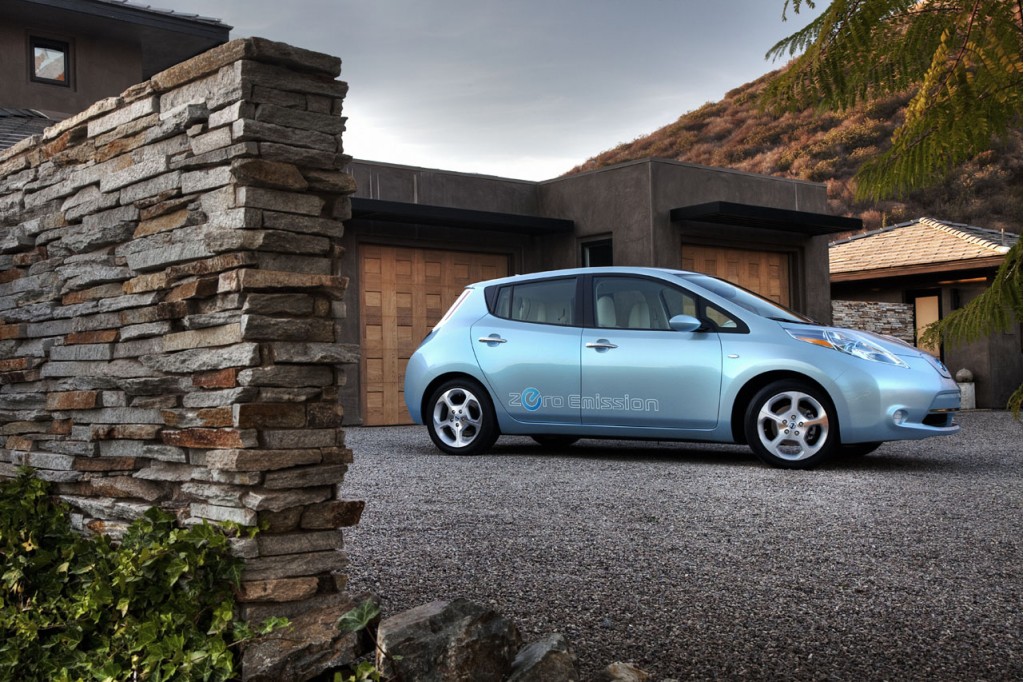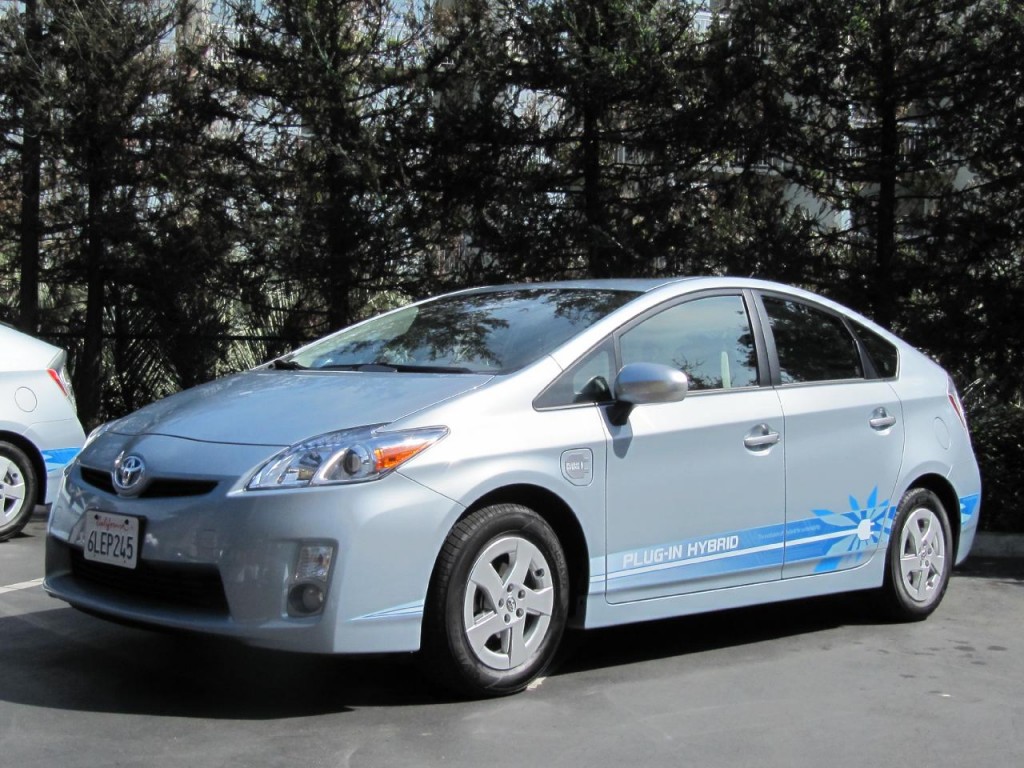Now we know: The first two plug-in cars from major manufacturers will go head-to-head on warranties and lease prices: $350 a month for the 2011 Chevrolet Volt, $349 for the 2011 Nissan Leaf.
Now the choice shifts to other measures, including electric and overall range, as well as the plug-in perks that states like California offer to early adopters to encourage them to opt for electric cars.
This is where it gets interesting. While California loves the Nissan Leaf, current regulations deny Chevy Volt buyers two significant perks: a $5,000 rebate, and permission to drive solo in HOV Lanes.

2011 Nissan Leaf
Federal credits yes, CA rebate no
Both the 2011 Leaf and the 2011 Volt are eligible for the maximum $7,500 federal tax credit that goes to buyers of plug-in cars with battery packs of 16 kilowatt-hours or more.
Some states add their own incentives as well. Georgia and Oregon, for example, offer state tax credits ($5,000 and $1,500 respectively).
California offers a tax rebate instead, a measure considered more powerful than tax credits because the rebate check that comes in the mail effectively cuts the car's purchase price within weeks, rather than making buyers wait until they file their taxes.
Are you an AT-PZEV, little car?
The highest California rebate of $5,000 goes only to zero-emission vehicles, those cars with no tailpipes. The all-electric Nissan Leaf qualifies, but the Volt--whose range-extending gasoline engine switches on to provide electricity when the battery is depleted--does not.
California's EV buyers had expected the Volt to qualify instead for a reduced rebate of roughly $3,000, says EV advocate Chelsea Sexton.
But that hope was quashed when the Volt didn't qualify as an Advanced Technology Partial Zero-Emissions Vehicle (AT-PZEV), a specific category of clean vehicle in the California's complicated taxonomy of emissions classes.
In the eyes of California regulators, the plug-in 2011 Chevrolet Volt is no cleaner than the 2011 Chevrolet Cruze compact--despite its ability to run solely on grid power for up to 40 miles, including at freeway speeds.

prototype 2012 Toyota Prius Plug-In Hybrid, April 2010
The 2012 Toyota Prius Plug-In Hybrid, on the other hand, does qualify as an AT-PZEV and will get a partial rebate, even though it must run its gasoline engine at freeway speeds.
No HOV perks either?
The other major plug-in perk is single-driver access to California's high-occupancy vehicle lanes, greatly prized in congested San Francisco and Los Angeles traffic. But current legislation won't extend that to the Volt either.
A bill before the California Senate, SB-535, is intended to let plug-in cars with a sole occupant into the HOV lanes. It's similar to a law that expires at the end of 2010 giving 85,000 lucky drivers of three specific hybrid models that privilege.
Come January, just a few thousand all-electric, natural-gas, and hydrogen vehicles will qualify for that access unless SB 535 passes.
That bill has taken "lots of twists and turns," says Jay Friedland of Plug-In America, an advocacy group that works to support and encourage plug-in vehicles. See, for instance, the strike-throughs in the amended version of SB 535.

2011 Chevrolet Volt
Twists and turns
The California Air Resources Board has proposed amendments to the latest revision that enhance AT-PZEV eligibility for HOV lane access. The original bill had required a threshold of 65 miles per gallon for eligibility, which Plug-In America supports.
The problem is that the EPA still hasn't decided how to rate the fuel economy of plug-in vehicles that have gasoline engines too, since their effective gas mileage depends entirely on how they're used.
Gas on freeways good, electricity bad ???
Even worse, Sexton notes, is a bizarre paradox created by the AT-PZEV requirement: A car that must use its engine on the freeway will get HOV-Lane access, while the Volt--which can run on battery power at highway speeds--will not.
So a Chevrolet Volt that does less than 40 miles a day may never burn a drop of gas, for instance, but will still be banned from the HOV lanes.
Whereas the 2012 Toyota Prius Plug-In Hybrid that's being flogged down the freeway at 85 mph will consistently burn gasoline at its highest rate, and yet it will be able to do so from the HOV lane.

prototype 2012 Toyota Prius Plug-In Hybrid, April 2010
No word yet on whether various other electric-car perks--like free parking in the closest lots at Los Angeles International Airport, worth at least $30 a day--will be extended to the Volt.
Cold starts a problem
Part of the challenge lies in a clause of California's Enhanced AT-PZEV definition, says Friedland. It requires zero evaporative emissions, which is hard to design into a vehicle whose gasoline engine may not be run regularly.
Friedland says he understands that the Prius Plug-In Hybrid uses a coolant thermos bottle to keep its catalytic converter warm. (Catalysts must warm up before they clean exhaust emissions effectively.)

2011 Chevrolet Volt late-night recharging in Little Rock, Arkansas, during July 2010 Freedom Drive
Future Volts might have to use battery power to keep their catalytic converters heated to several hundred degrees, which would likely reduce their electric range--even if the engine attached to the converter never switched on.
It's "an area CARB has to consider in the future," says Friedland, "especially when the benefits" of providing the same incentives for plug-in Volts "are so large."
CARB may yet tweak its definition of what qualifies as an AT-PZEV to reflect the variations in vehicle technology represented by vehicles like the Volt. Unless that happens, the 2011 Chevrolet Volt won't get the love from California that the 2011 Nissan Leaf does.












